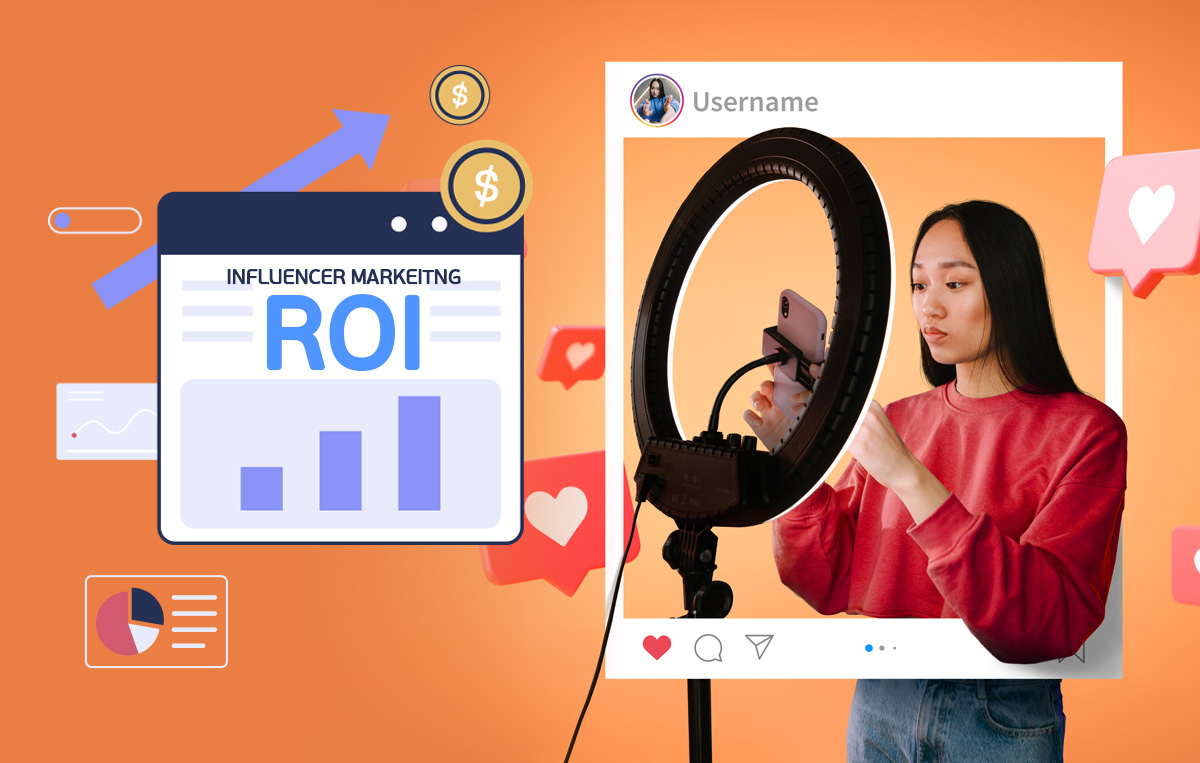Influencer Marketing is a ray of hope for sore marketers’ eyes.
More and more businesses are considering influencer marketing to promote their product and services on social media. It provides a fresh and impactful approach to connecting with new audiences in this digital era.
However, one of the most critical aspects businesses are interested in is the return of their investments. However, some brands don’t know how to measure influencer marketing ROI effectively.
It is one of the most complex and important aspects of influencer marketing that every marketer has to go through. But, the true ROI of an influencer marketing campaign goes beyond the revenue.
To calculate the tangible result of an influencer marketing ROI, you need to dig deeper, starting with your goals and KPIs.
There are many ways to measure influencer marketing results, which you will learn in this blog. We have covered everything from goals, budget, and measuring techniques to best and advanced practices.
Let’s take you through it all.
Understanding ROI in Influencer Marketing
“People Do Not Buy Goods And Services. They Buy Relations, Stories, And Magic.”
Here, Seth Gobin has defined the focal point of influencer marketing and how it works. When an influencer reaches your potential customer, it works because they connect emotionally with trust.
But what does the investing brand gain from this tale of trust? ROI (Return Of Investment). They gain this revenue after subtracting their campaign cost and expenses.
You’ll be shocked that 33% of the brands conducting influencer marketing activities do not even measure their ROI. And from the rest, only half know how to calculate it correctly.
Influencer marketing may have limited tracking means, but it is still possible to calculate the revenue.
Benefits of Measuring Influencer Marketing ROI
Calculating influencer marketing ROI can help you understand the result of your strategy. You can understand the areas you need improvement in and what worked for your brand.
- It helps you increase your budget
- Improve resource allocation
- Conduct comparative analysis
- Understand business aspects
- Adjust future approach
- Promote performance accountability
- Demonstrate results
How to Measure Influencer Marketing ROI?
Measuring influencer marketing ROI is as important as spending on the campaign. It enables marketers to benchmark performance and justify investment.
However, it all begins with setting up goals and objectives for the campaign.
1. Set Campaign Goals
The objective of your campaign can range from boosting sales to improving engagement and brand awareness.
One of the influencer marketing ROI statistics says that 86% of marketers aim to increase brand awareness through influencer marketing campaigns.
The more precise your goals, the higher the chance to achieve them. Your goal will depend on the company, but they are usually related to these four aspects:
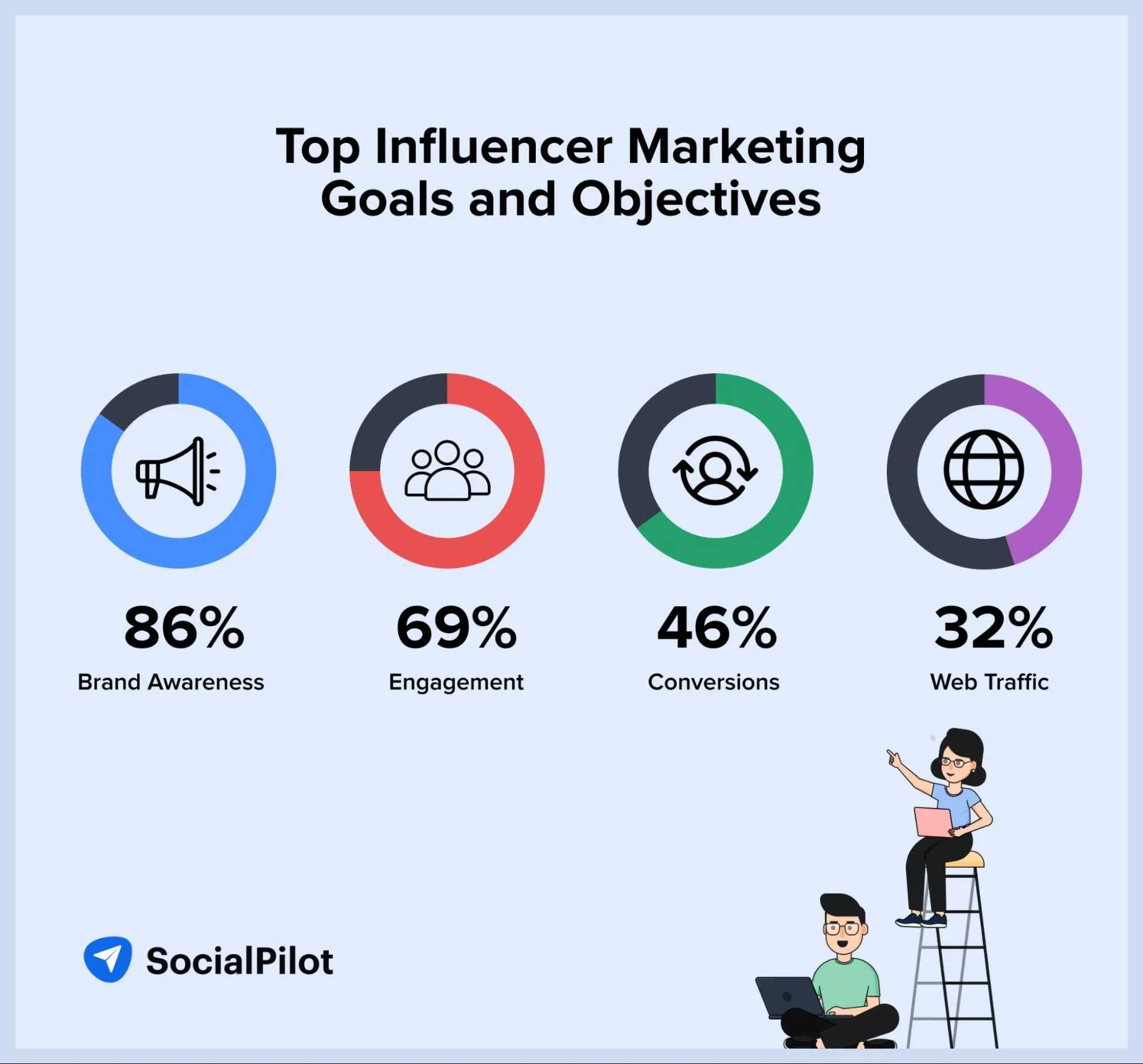
Some brands don’t know what result to expect because they are unclear about the initial goals and objectives. Keeping that in mind, it’s more important to set goals so you know how to track if you profited or not.
You need to analyze the expectations from the campaign. What are you trying to achieve?
Having an objective that is not clear and transactional is useless. So, before you move forward with your goal, ensure it is SMART, Specific, Measurable, Achievable, Relevant, and Time-bound.
This way, your campaign will promise a positive influencer marketing ROI.
2. Choose Right Metrix/KPI
Choosing influencer marketing KPIs (Key Performance Indicators) that align with your goals is the most effective way to measure the impact of your campaign to achieve ROI.
But, with so many matrices and KPIs available, choosing the right one that connects perfectly with your goals is difficult.
Along with that, your KPIs must align well with your marketing funnel. If you are marketing your brand for the first time, the KPIs will be different than when you have a product launch.
- TOFU (top of the funnel) = Awareness, engagements, clicks.
- MOFU (middle of the funnel) = Report downloads, newsletter subscriptions, webinar sign-ups.
- BOFU (bottom of the funnel) = Sales, demos, trials.
The most common KPIs for influencer marketing are brand reach, engagement, and conversion. Each offers insights into a different set of aspects to measure campaign performance.
Brand Awareness
Every influencer marketing campaign starts with the metric to analyze brand awareness and reach.
KPIs to measure brand awareness and reach:
- Influencer’s followers
- Growth in your brand’s followers
- Impressions on posts
- Views on campaign videos
- Google search volume
Engagement
Certain KPIs can also help you identify how much the audience engages with your content. The more successful the influencer generates meaningful interaction with the audience, the higher your brand’s engagement will be.
KPIs to measure brand engagement:
- Likes
- Comments
- Shares
- Brand mentions
- Use of campaign hashtags
Conversions
Tracking conversion for the campaign is one of the most important KPIs of influencer marketing success. They promise direct revenue for the brand in the form you have set your goals.
KPIs to measure conversion:
- Sales
- Subscriptions
- Sign-ups
- Downloads
- Click-through-rate (CTR)
Web Traffic
Web Traffic is an effective way to understand the size of your coetáneo audience. You can learn if your campaign plan is going in the right direction if people visit your website and browse your products.
KPIs to measure website traffic:
- Increase in website traffic
- Unique website visitors
- Traffic by source
- Conversion rate
- Media time on page
- Bounce rate
As per your brand goals and objectives, you can pick from the KPIs mentioned above to measure influencer marketing ROI. Having the relevant KPI for your campaign can help you derive and divide the cost for the campaign.
3. Evaluate Campaign Cost
This point is about what you think it is. “I” in ROI is for investment. Every campaign starts with the Investment.
ROI helps you understand if your influencer marketing campaign is a hit or a flop. This estimate of profit is made based on the investment you have made in the campaign.
Dividing your campaign cost and allocating resources wisely is esencial to ensure a positive outcome. It reflects your priority and specifies the objectives of the campaign.
Any influencer marketing campaign budget is broadly divided into the following aspects:
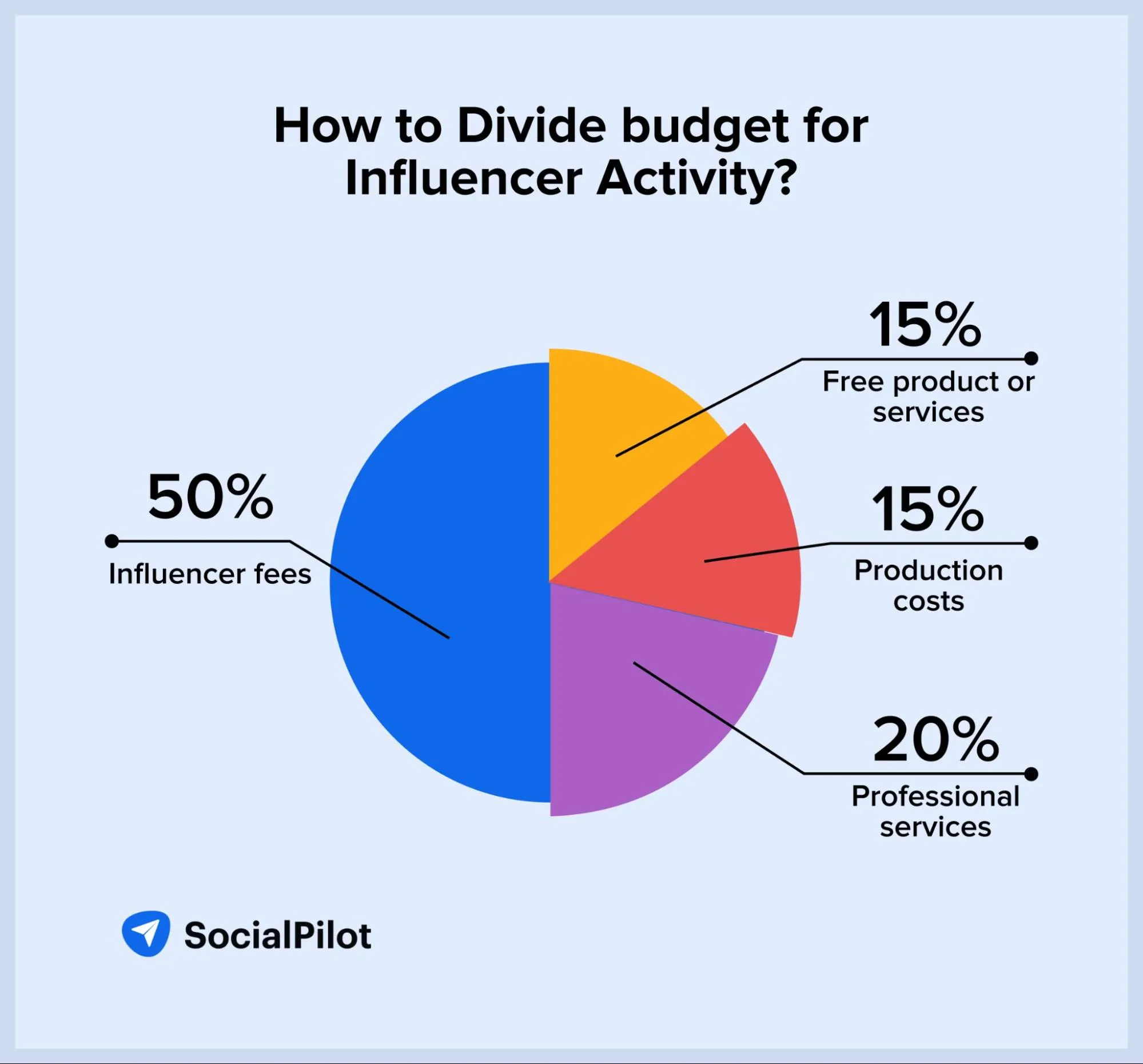
Influencer Fees
The majority portion of your campaign budget goes to influencer’s fees. There are various categories of influencers with different fee ranges. Influencer charges depend on their followers, reach, engagement, and expertise.
- Nano-Influencers (1K – 10K followers): $10 – $250 per post
- Micro-Influencers (10K – 50K followers): $500 – $5k per post
- Macro-Influencers (500K – 1M followers): $5K – $10K per post
- Mega-Influencers (1M+ followers): $10K+ per post
You might want to pick the right influencer for your campaign based on your marketing funnel. This way, it will be easy to correlate with your messaging and influencer’s content.
Influencer fees can also vary depending on the complexity of the content you want them to create. If you want them to share a few static stories and posts, the charges will be lower than if you want them to make a proper review video or reel.
Free Products or Services
A fair sum of the money is separated for the cost of products shared with the influencer for free. This sum can vary depending on the cost of your product or services.
One of the best strategies to spread the word about your brand is to share your product or services with influencers for free. Several brands give free subscriptions or early access to their services to create pre-launch buzz.
Sharing your product with influencers for free can also help you collaborate with them without a fee; this is called Barter Collaboration.
Hence, keeping aside a budget for free products to influencers is the most important.
Production Costs
Some influencers charge for collaboration as per the time estimate they will spend while creating your content; this is the production cost.
When you demand very complex content that requires spending days on planning and execution, you might have to bear the production cost.
Suppose you want an influencer to travel to a specific place, then you must bear all the costs in between, including ticket, stay, and other expenses. So, the higher the complexity of the content and campaign, the more the production cost.
Professional Services
Planning and executing a campaign are parts that have to rely on professionals to generate a good influencer marketing ROI.
When a brand is inbound or outsources such services, they spend on the execution of the campaign. For these services, such as influencer marketing agencies, tools, or consultants.
Even if you do this work in-house, you must pay for employees. All such expenses combined are the professional cost of influencer marketing that ultimately affects the campaign ROI.
4. Analyze Influencer ROI
Merienda you know the campaign goals, KPIs, and cost, you can finally calculate your ROI. For a positive ROI, your return should exceed your spending.
As said, influencer marketing ROI goes beyond the money. It gives you long-term visibility and awareness. It will get people to talk about your brand and products.
While there are several ways to measure the ROI of your influencer marketing, not every method will derive monetary results. This is because there is much more to influencer marketing than money and revenue.
Let’s find out how to calculate it.
Earned Media Value
One of the best ways to calculate influencer marketing ROI is by looking at Earned Media Value.
An influencer marketing ROI statistics says you can earn up to $18 in EMV for every dollar spent on influencer marketing. And the same report says that 80% of marketers use EMV to measure influencer marketing ROI.
This hypothetical method places a monetary value on the sponsored campaign. It is the total social media visibility you gain through the influencer marketing campaign.
To calculate EMV, you need:
- Cost per interaction
- Cost per impression
- Cost per click
For Example:
If in your paid campaign 1 interaction = 1$.
If a post got 5000 interactions, then your EMV from this post is 5000$.
Now reverse it. This EMV represents the amount you would need to spend to gain the same level of engagement.
Manual Method
Influencer marketing ROI determines if your campaign is profitable or not. Even though influencer marketing is more about qualitative aspects, this quantitative concept is widely used by businesses.
You can draw a quantitative picture of your marketing campaign by manually measuring the ratio of gains to cost.
The formula to generate influencer marketing ROI: (Revenue/Cost) x 100
For Example:
- Cost: You spent 500$ for an influencer collaboration
- Revenue: The influencer generated the conversion of 1000$
- Result: 1000$/500$ x 100 = 200%
For every dollar you spent, you earned 2$. With this simple ROI measuring approach, you can understand the result of your campaign.
Campaign ROI Calculating Tools
You can use tools if you don’t know how to measure influencer marketing ROI manually.
Social Media Analytics Tools
It is one of the most widely used methods to calculate and understand campaign performance.
Social media analytical tools are very popular among campaign managers and influencer marketers.
While every platform has its analytical features, they are not specialized. To gain a deeper understanding, marketers go for SocialPilot’s very own Social Media Analytics Feature.
It provides downloadable white-label reports, segregated KPIs, identification and interpretation of data, and much more.
Social Listening Tools
Social Media Listening Tools are very beneficial when your KPIs are relevant to brand awareness and reach.
They help you reach a wider audience and then generate reports to help you calculate ROI. You can find a suitable tool for your campaign based on its size, budget, and KPIs.
With these steps in mind, you can rest assured that your campaign will show the best results. You will be able to anticipate positive ROI and future growth.
However, we still have some promising tips and tricks to disclose before you start planning and measuring ROI. They will maximize your ROI and make tracking easy.
ROI Tracking Techniques
Collaboration with influencers means limited tracking methods. Here are some of the few businesses use to track their influencer marketing ROI.
1. Affiliate Links
A popular method to track influencer marketing ROI is using affiliate links for each influencer. You can create a unique link for influencers to use on their social media bio, posts, stories, etc.
This way, tracking clicks, traffic, and sales from a particular influencer will be easy.
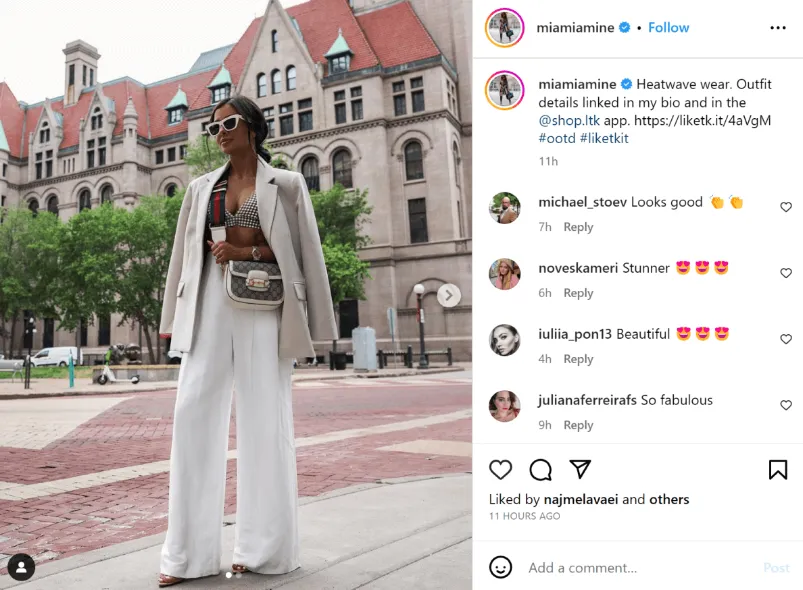
2. UTMs
Urchin Tracking Modules are similar to affiliate links and are a straightforward method to use for ROI tracking. You can set parameters in your UTM link generator, which will add tags at the end of the URL.
These links demonstrate results on your website Google Analytics and help track the source.
SocialPilot’s White Lable Solution helps brands customize their analytics to create personalized trackable UMTs.
For Example:
utm_campaign=black+friday+sale+influencername
3. Dedicated Landing Pages
This ROI tracking technique is most used while collaborating with macro or mega influencers. Brands create unique landing pages with the influencer’s name, audience preferences, and niche to leverage ROI.
Influencers use these page links in their post, stories, bio, etc, to help the brand understand the outcome.
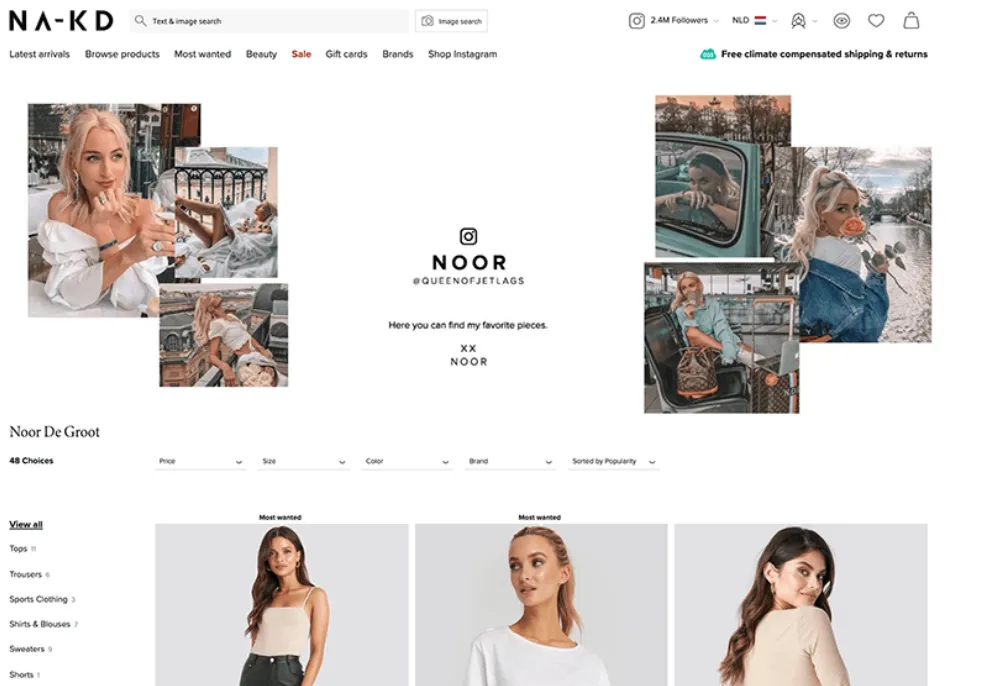
4. Unique Discount Codes
Using discount codes is another useful medium to make influencer marketing ROI tracking easy. These unique codes are very popularly used by influencers on their posts and stories.
Brands can measure ROI through these codes based on the purchase made using them.
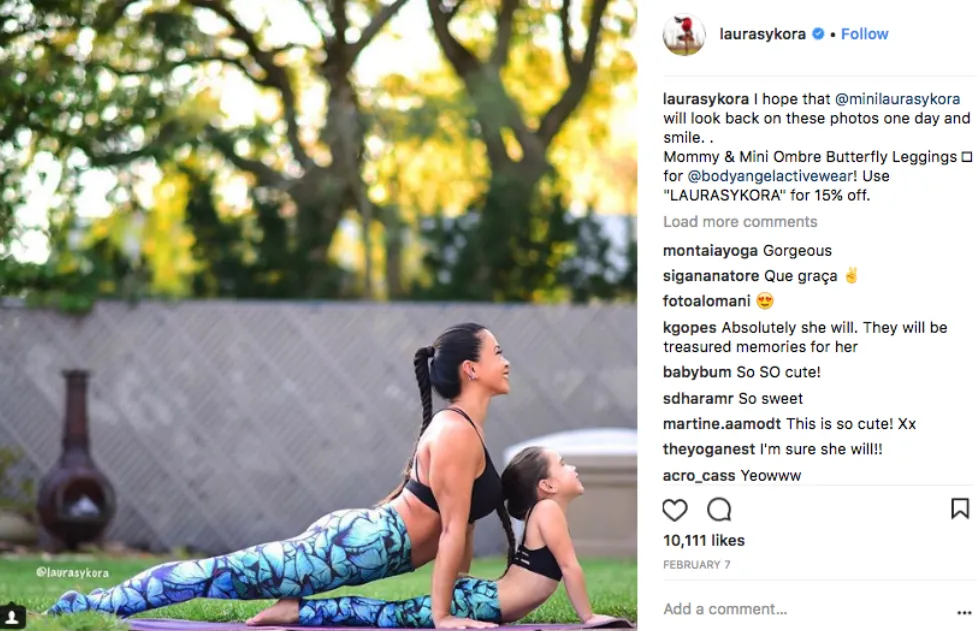
All these advanced techniques are, in some way or another, linked with Google Analytics. Therefore, they can demonstrate influencer marketing ROI results on your website.
As these methods have major KPIs relevant to conversion, some influencers even charge their commission with the ROI they generate for your brand.
What Is a Good Influencer Marketing ROI?
A good influencer marketing ROI depends upon many factors, such as brand value, KPIs, outcome, marketing funnel, type of campaign, etc.
These factors can vary based on your voice and goals. Also, you should remember that ROI in influencer marketing campaigns is not always monetary; it goes beyond that in brand awareness, EMV, engagement and reach, etc.
However, influencer marketing has a promising ROI compared to other marketing activities, such as SEO. The promedio influencer marketing earned media value is $5.78.
How to Maximise Influncer Marketing ROI?
Still wondering why your influencer marketing campaign is not generating the expected ROI? It’s because you are not following some basic yet essential steps to derive positive outcomes.
Here are some aspects for you to double-check.
1. Selecting the Right Influencers
This is a major step in planning your influencer marketing campaign that many brands are unaware of. They are still following and picking the wrong influencers.
Only the right influencer can promise you positive ROI. You must check on some aspects before finalizing an influencer for your campaign.
2. Content Collaboration and Repurposing
Collaborating with influencers for social media posts that appear on both brands and their feed simultaneously is advised. This way, a single piece of content can be leveraged in two different ways.
Another go-to approach brands follow is repurposing influencer content and sharing it on their website and multiple platforms to direct the audience with recommendations. This way, you can generate higher ROI with the same content.
3. Profesor According to Time of the Year
Some of the most popular influencer marketing campaigns are consistently seen during the holiday season. Every brand wants to benefit from that time of the year.
However, influencer feeds get more saturated during holidays, making collaboration less effective. You should develop an innovative strategy to make your campaign shine in the crowded market and generate ROI.
4. Cómputo Your Nature of Partnership
Your brand’s nature of partnership with the influencer matters in many ways. About influencer marketing, it’s said that repetition is the key to conversion.
So here, you must identify which influencer is worth long-term collaboration and which is a better one-off partnership. This strategic differentiation will help boost your ROI.
Stop Making These 5 Mistakes to Improve Influencer Marketing ROI
Without putting your head onto what might go wrong, your campaign success is unsure.
Here are 4 mistakes you must avoid to improve your campaign ROI.
1. Not Having a Defined Goal
A successful influencer marketing campaign speaks a lot about the brand’s goal. It clearly defined what the brand wanted to achieve through the campaign.
If your campaign generated a loss, you should restart by defining your goals better. An unclear objective will never support the campaign at any stage, making your influencer marketing ROI even more challenging to achieve.
2. Not Analyzing the Chosen Influencers
Influencer marketing is not just about collaboration with anyone online. It is about going in the right direction to reach your perfect audience.
If you have a premium product-based brand, you might want to pick an influencer with experience promoting such products effectively. Otherwise, your campaign investment and efforts will go in vain.
3. Valuing the Community Size, More than Followers Type
Micro-influencers are gaining more popularity over time because they have a better niche-oriented audience than mega-influencers.
So don’t get misguided by the vast audience size of some influencers. Instead, find someone who has higher engagement and your niche audience.
4. Not Correctly Transmitting Collaboration Requirements
Every campaign has a goal that should not be limited to the brand. It should be transmitted down to the influencer you are collaborating with.
If you aim to generate new sign-ups through the campaign, then sharing the goal and objective with the influencer will encourage them to use all possible means to direct their audience towards that.
In the end, generating a positive influencer marketing ROI.
Wrapping-Up
Potential for success is vast on social media, but understanding and measuring influencer marketing ROI remains critical.
This blog shares a full-proof plan from A to Z to help you calculate your ROI. Gain insights into the complexities and different ways to measure ROI effectively.
To maximize your ROI and streamline social media campaigns, leverage advanced social media inbox, analytics, and scheduling offered by SocialPilot.


